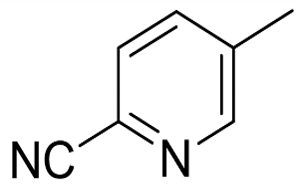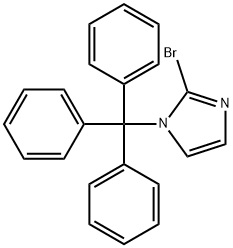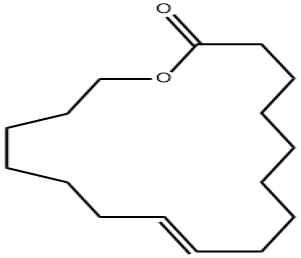2-Cyano-5-methylpyridine(CAS# 1620-77-5)
Risk and Safety
| Hazard Symbols | Xi – Irritant |
| Risk Codes | 36/37/38 – Irritating to eyes, respiratory system and skin. |
| Safety Description | S26 – In case of contact with eyes, rinse immediately with plenty of water and seek medical advice. S36 – Wear suitable protective clothing. |
| UN IDs | 3439 |
| Hazard Class | IRRITANT |
| Packing Group | Ⅲ |
2-Cyano-5-methylpyridine(CAS# 1620-77-5) Introduction
1. Appearance: colorless to yellow liquid.
2. Melting Point:-11 ℃.
3. Boiling point: 207-210 ℃.
4. Solubility: slightly soluble in water, soluble in organic solvents such as alcohols and ethers.Use:
1. Is widely used in organic synthesis, can be used as a reagent, intermediate or catalyst to participate in a variety of reactions, such as C- C bond formation reaction, cyanide reaction.
2. It can participate in the synthesis of pyridine, pyridine ketones and other organic compounds.
3. Can also be used in pesticide, medicine and other fields.
Method:
It can be prepared by the following synthetic route:
1. Pyridine reacts with methyl acetic anhydride to generate 5-methyl pyridine.
2. React 5-picoline with sodium cyanide under alkaline conditions to generate a.
Safety Information:
1. Over belongs to organic compounds, there is a certain toxicity, please follow the laboratory safety procedures, pay attention to protective measures.
2. Avoid contact with skin, eyes, etc. If there is contact, rinse immediately with plenty of water. If there is any maladjustment, please seek medical attention.
3. In storage and handling, please avoid high temperature, fire sources, and maintain a well-ventilated operating environment.
4. Waste liquid should be disposed in accordance with local regulations to avoid environmental pollution.
Please note that the use and handling of chemical substances should follow relevant regulations and safe operating procedures, and follow appropriate laboratory operating guidelines.







